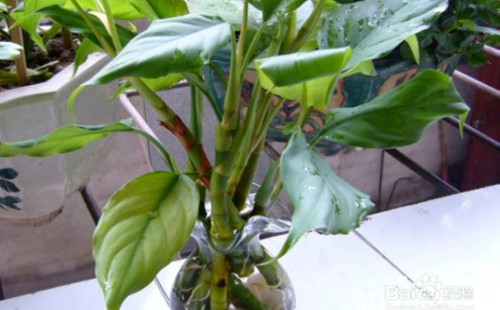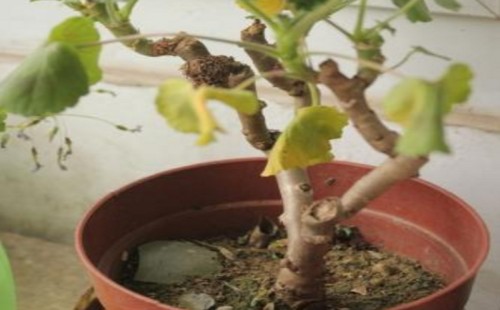What if the leaves of Hydrangea turn yellow?
You know what? One flower symbolizes unity and blooms in clusters and tightly packed, so people call it hydrangea. Hydrangea is not only often used as a cut flower material, but also very suitable for potted cultivation! It is beautiful all year round, especially in autumn, more beautiful.

Hydrangea plump and beautiful, elegant is not generous, potted ornamental effect is excellent. However, in the process of conservation and management, we need to care carefully, otherwise there may be growth problems, the most common phenomenon is leaf yellowing. So, what do we do when we encounter yellow hydrangea leaves in potted plants? Of course, we also have to investigate from the use of our daily conservation and management tools.
Hydrangea leaves appear yellow phenomenon, usually due to water and fertilizer, light and temperature management caused by improper. Therefore, we should make these aspects the focus of investigation. Because hydrangea is a perennial plant, water resistance is poor, usually dry do not like wet, but if long-term water shortage, leaves will still appear yellow and fall off the phenomenon. Excessive watering naturally does not work, it will cause the pot soil to be too wet, which is contrary to its growth habit of not liking moisture. Therefore, the pot soil is too wet will also cause the phenomenon of yellowing leaves, falling leaves, and then affect the normal growth of plants.
If potted hydrangea leaves yellow phenomenon, may be caused by excessive alkalinity in the pot soil. Because too much alkalinity will hinder its normal absorption function, preventing it from absorbing trace elements necessary for maintaining its own growth. If it is this reason that causes the plant to appear iron deficiency yellow leaf phenomenon, we might as well add a small amount of ferrous sulfate when watering the plant, I believe that the yellow leaf phenomenon will be suppressed soon. However, iron intake alone often only promotes the yellowing of new leaves to green, and there is still a large part of the old leaves will not improve. So we also need to take other auxiliary measures to promote the plant to restore the green state.
Fertilization at ordinary times should take the "thin fertilizer and frequent application" way, avoid chasing thick fertilizer and raw fertilizer, otherwise it may cause root burning phenomenon. If the root system of the plant is injured, it will inevitably affect the normal growth of the plant, and then there will be yellow leaves and deciduous phenomena. If there is too much fertilizer, irrigate water in time to dilute the excess fertilizer accumulated in the basin soil as much as possible until it is discharged from the basin bottom outlet.
However, hydrangea flowers sometimes appear yellow leaves due to improper light and temperature management. If the light is too strong, especially in the hot summer, if it continues to be exposed to the sun, the plant will not only appear yellow leaves, but also let the branches and leaves wither. However, if hydrangea flowers are in a light-deficient environment for a long time, they will not be able to get light to promote photosynthesis, and this phenomenon of poor growth will also occur. In addition, temperature also plays an important role in the growth of hydrangea. Temperature is too high or too low, are not suitable, not only will cause yellowing of plant leaves, but also easy to cause a series of other poor growth problems.
When we find that the potted hydrangea leaves are yellow, we must first remove the yellow leaves in time to avoid excessive consumption of nutrients and water, thus causing the growth of healthy branches and leaves. Then put it in sufficient light, good ventilation conditions in the environment maintenance. If there are any remaining flowers on the plant at this time, they should also be removed to reduce nutrient consumption. As long as we adopt scientific and reasonable methods for conservation and management in the later stage, we believe that hydrangea will eventually return to normal growth state.
Time: 2019-05-29 Click:
- Prev

Why are the yellow leaves of evergreen cultured in water?
Evergreen can be cultivated not only in soil, but also in hydroponics, but the culture medium they use is completely different. The soil is young and naturally inseparable from the soil, but the basin soil is required to be fertile and soft, breathable and permeable, while hydroponics must be raised by water. But no matter which way to breed it,
- Next

What about the yellowing of the geranium leaves?
Geranium blossoms delicate and beautiful, with a relatively high ornamental value, so many people like to plant it as a potted plant on their own balcony, bringing a different style to the balcony. Especially in some places abroad, people like to use it to decorate roads and decorate life. But if you want to raise the potted geraniums well
Related
- Fuxing push coffee new agricultural production and marketing class: lack of small-scale processing plants
- Jujube rice field leisure farm deep ploughing Yilan for five years to create a space for organic food and play
- Nongyu Farm-A trial of organic papaya for brave women with advanced technology
- Four points for attention in the prevention and control of diseases and insect pests of edible fungi
- How to add nutrient solution to Edible Fungi
- Is there any good way to control edible fungus mites?
- Open Inoculation Technology of Edible Fungi
- Is there any clever way to use fertilizer for edible fungus in winter?
- What agents are used to kill the pathogens of edible fungi in the mushroom shed?
- Rapid drying of Edible Fungi

